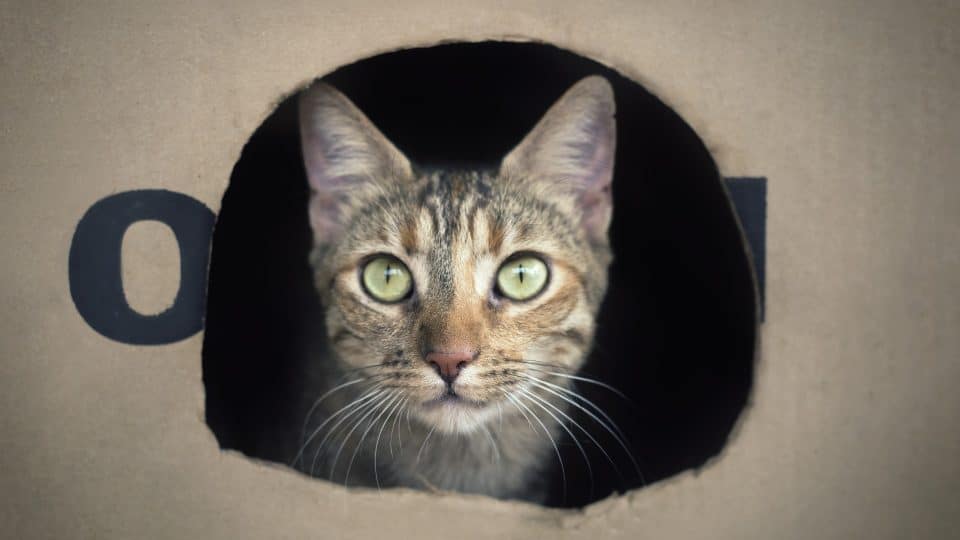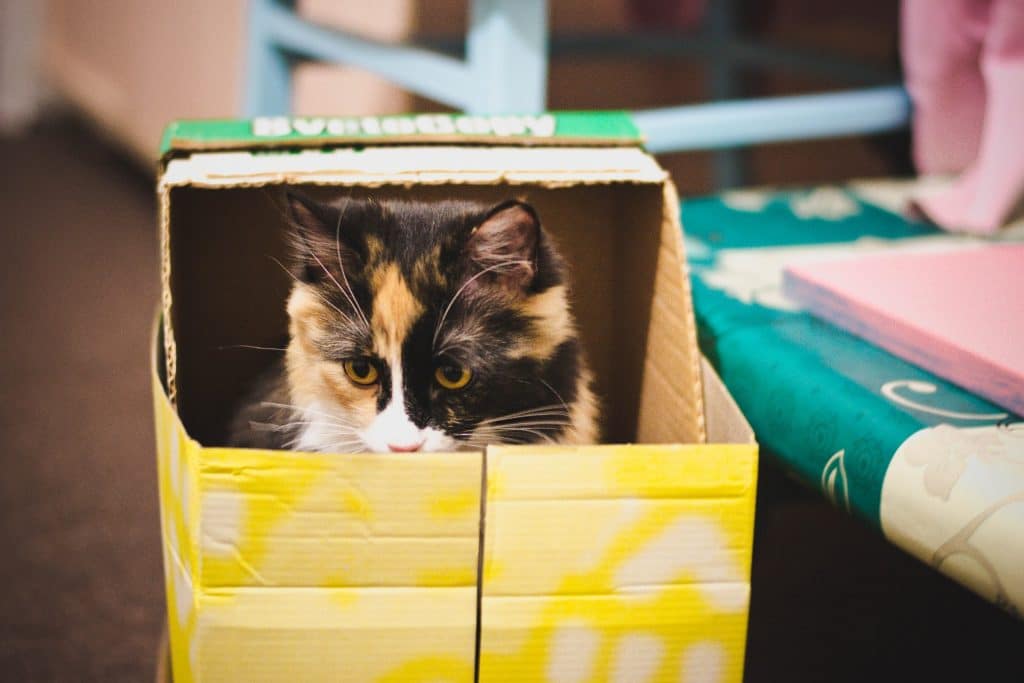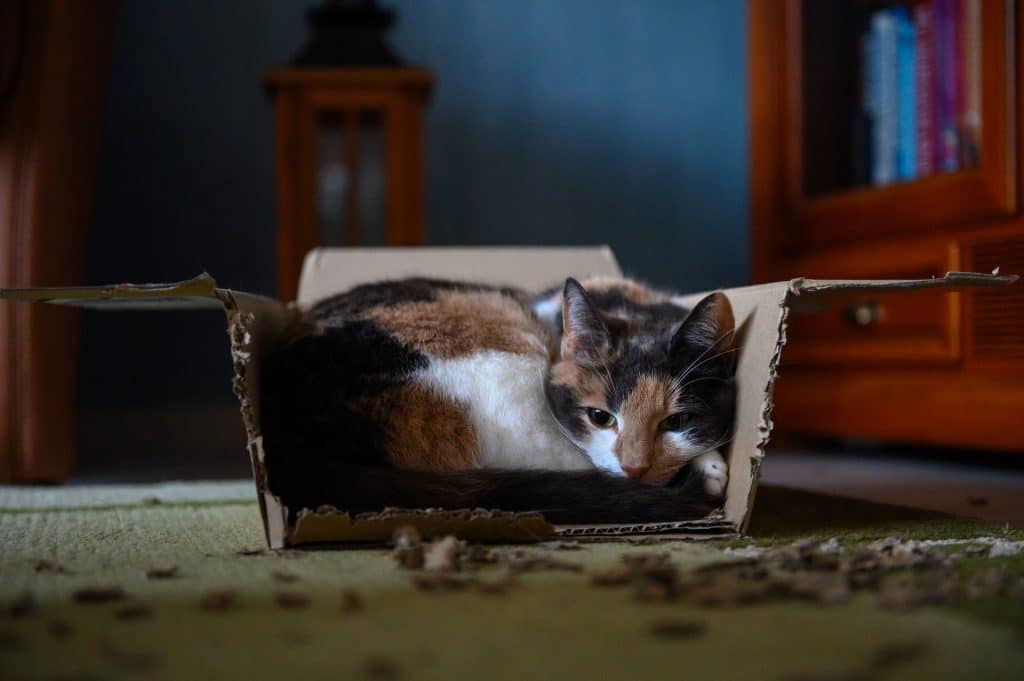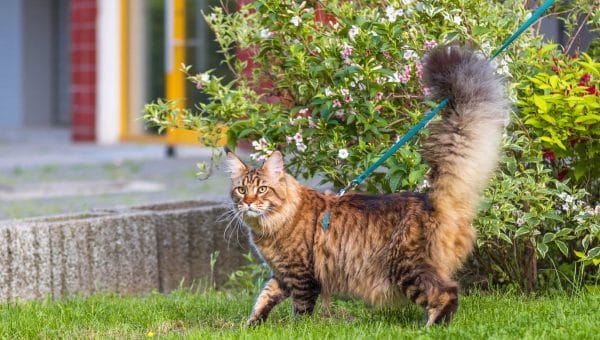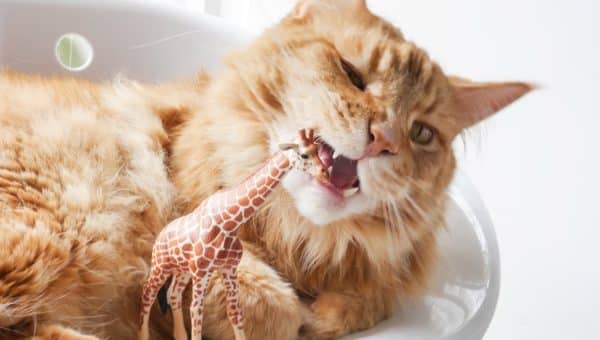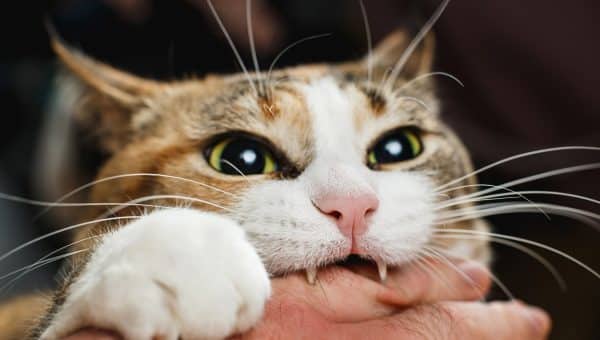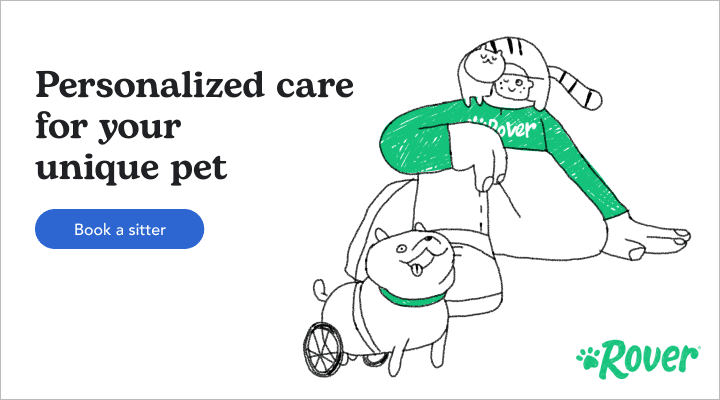- Not a substitute for professional veterinary help.
Like moths to a flame, cats can’t resist a good box. Size and shape matter little – if they fits, they sits. But why do cats like boxes?
Cats love boxes for a few reasons, according to science. In a cardboard box, our cryptic kitties get everything from a stress-reducing hiding spot to a cozy, warm spot for a catnap. Here are four reasons why cats and boxes make the best of friends.
1. Boxes give cats a territory all their own
Cats are territorial by nature. Boxes are a valuable addition to a territory. I find it charming that cats will even sit inside of a square marked on the floor. It’s square, it’s enclosed, it’s mine.
As a fairly solitary species, cats like a lot of alone time. Research shows that cat’s don’t develop conflict resolution skills like dogs do, and they prefer to go off by themselves after a stressful situation arises. From the safety of a box, they can survey their territory and know if the individual who just caused offense is approaching
Cats also make nests for themselves and their kittens, and a box can be perfect nesting spots. As crepuscular (dawn and dusk) hunters, there is plenty of time for cat naps. Cats sleep 15-20 hours a day and boxes are an excellent place to feel safe, warm, and cozy.
2. Boxes are like cat sensory deprivation chambers
Few things are more stressful to a feral cat than being scooped up by animal control and taken to a strange, loud, bright animal shelter. Boxes to the rescue! A recent study found that providing hiding boxes to feral cats as they arrive at an animal shelter decreases their stress and reduces the time it takes them to recover from the transition.
3. Boxes keep cats warmer
Cats like to be in warm rooms—warmer than most people prefer. This might be because they are descended from desert dwelling cats of ancient Egypt. And it’s definitely the reason that cats are magnetically attracted to warm spots like heating vents, sunny spots, and the top of appliances.
Boxes help keep heat in and make for cozy sleeping.
4. Boxes can make a cat feel like they’re in a warm embrace
Cats relax in boxes for the same reason that people relax into hugs and pigs find gentle side squeezes to be soporific (sleepy-making), as animal Behaviorist Nicholas Dodman, PhD explained to PBS. These sensations of gentle pressure stimulate the body to produce endorphins, neurochemicals that boost pleasure, reduce pain, and create a sense of well-being.
Have you heard about the “hug machine” invented by animal behaviorist and animal welfare advocate Temple Grandin? She discovered this phenomenon early in her life, when she found that steady pressure on the trunk of her body was soothing, relieved anxiety and decreased feelings of overstimulation.
Grandin explains that there is a fundamental difference between the light touch of a tickle, and the deep touch of a hug or firm stroke. “In animals, the tickle of a fly landing on the skin may cause a cow to kick, but the firm touch of the farmer’s hands quiets her.” While a light touch alerts the nervous system and stimulates a reaction, deep pressure is relaxing and calming.
Is there a downside to cats and boxes?
A cat’s love of boxes can get them into some questionable circumstances.
“I was packing to move to a new house, and I started to get worried that I couldn’t find my cat Toast anywhere.” my cat-loving friend Texas told me. “Maybe he didn’t want to move? When I was loading the moving truck, I heard meowing from a box of sheets and towels that wasn’t taped shut. He’d probably been in there for 12 hours.”
So check your boxes before you chuck your boxes. And while you’re at it, make sure unused appliances and cabinets are firmly closed so they don’t turn into dangerous cat traps.
Need Cat Sitting?
Cats seem more independent than dogs, sure, but they need attention, play, and treats when you’re gone, too. Your great cat deserves great cat care. You’ve found the best cat name, so now it’s time to find them the perfect cat sitter with Rover.
Find your cat’s perfect match, right from your phone—and then hit the road happy.
